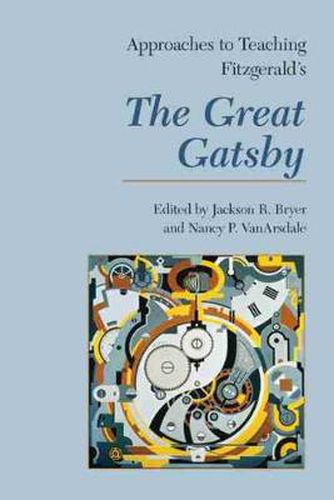Readings Newsletter
Become a Readings Member to make your shopping experience even easier.
Sign in or sign up for free!
You’re not far away from qualifying for FREE standard shipping within Australia
You’ve qualified for FREE standard shipping within Australia
The cart is loading…






Who is this Gatsby anyhow? Answering that question, voiced by one of the book’s characters, is fundamental to teaching F. Scott Fitzgerald’s The Great Gatsby. Although there is no simple answer, classroom analysis of this classic American novel can lead to a rich exploration of the colorful yet contradictory period Fitzgerald dubbed the Jazz Age. The novel also prompts considerations of novelistic technique, specifically point of view, characterization, and narrative structure.
This volume aims to give instructors of The Great Gatsby multiple tools and strategies for teaching the novel and for introducing students to the culture of the 1920s. Part 1, Materials, reviews the novel’s composition history and the scholarly resources related to the novel. In part 2, Approaches, contributors demonstrate a range of frameworks that usefully inform teaching, from the new historicism to feminist and gender studies to narrative theory. They also examine the novel’s complex artistry, variety of motifs and symbol patterns, and cultural and social influences, such as the era’s changing racial attitudes, the rise of a new suburban culture, and the dichotomy of East versus West in America.
$9.00 standard shipping within Australia
FREE standard shipping within Australia for orders over $100.00
Express & International shipping calculated at checkout
Who is this Gatsby anyhow? Answering that question, voiced by one of the book’s characters, is fundamental to teaching F. Scott Fitzgerald’s The Great Gatsby. Although there is no simple answer, classroom analysis of this classic American novel can lead to a rich exploration of the colorful yet contradictory period Fitzgerald dubbed the Jazz Age. The novel also prompts considerations of novelistic technique, specifically point of view, characterization, and narrative structure.
This volume aims to give instructors of The Great Gatsby multiple tools and strategies for teaching the novel and for introducing students to the culture of the 1920s. Part 1, Materials, reviews the novel’s composition history and the scholarly resources related to the novel. In part 2, Approaches, contributors demonstrate a range of frameworks that usefully inform teaching, from the new historicism to feminist and gender studies to narrative theory. They also examine the novel’s complex artistry, variety of motifs and symbol patterns, and cultural and social influences, such as the era’s changing racial attitudes, the rise of a new suburban culture, and the dichotomy of East versus West in America.